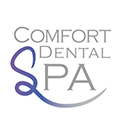Oral cancer is shown to affect up to 50,000 people every year in the United States and many more worldwide. Despite advances in treatment and diagnosis, a five-year survival rate for oral cancer is less than 60%. This is because although oral cancer is not difficult to diagnose, morbidity and mortality rates are high because of late detection and diagnosis. Therefore, it is important to be aware of the need for oral cancer screening and understand the risk factors.
What Is Oral Cancer Screening?
In simple words, it is an examination to look for any signs of cancer in the oral cavity. Oral cancer presents in various types which makes it necessary to get a professional screening done. It should be understood that screenings do not diagnose cancer directly. They are primarily done to identify any signs which are suggestive of a potentially cancerous condition.
How Is the Screening Done?
The clinician does a comprehensive intra-oral as well as extra-oral examination to identify any discolored patches, elevated tissues, tissue growth, and swelling. The extra-oral examination includes the facial structures and the neck as well. Cancers of the oral cavity can present as extra-oral swellings, causing an asymmetrical appearance. The intra-oral examination includes the evaluation of buccal mucosa, floor of the mouth, tongue, palate, tonsils, and lingual mucosa. The common methods used in screening are:
- Visual Examination: Abnormal white patches or red patches, abnormal growth or elevated patches
- Palpation: Oral and facial tissues are felt for lumps or any sensitive or tender areas with a gloved hand
- Oral Screening Dyes: There are commercial screening kits available that use dyes such as toluidine blue which pick up areas of high cellular metabolism. They differentiate cancer cells from regular cells
- Fluorescent Lighting: Similar to the dye, they highlight areas of abnormal tissue following the use of a fluorescent mouthwash
Once a thorough screening is done, the clinician decides whether the person needs further investigation or not. If cancer is suspected, the patients are referred for further tests to identify the specific nature of the condition. Most commonly, cytology or a biopsy is done. In both methods, a sample of cells is taken and sent to the pathologist for a final diagnosis.
Who Is At Risk?
There are a variety of causes for oral cancers which are intra-oral as well as general. It is essential to assess and identify groups of people who are more vulnerable to acquiring such cancerous conditions. Tobacco use is one of the highest causes of oral and pharyngeal cancers worldwide. Tobacco is consumed in many forms such as cigarettes, pipes, tobacco chewing, snuff, etc. and all of them are carcinogenic. Alcohol consumption is another common cause of the development of oral cancers in young adults. Significant sun exposure over a long period can also cause dysplastic changes. Viral infections, mainly caused by Human Papilloma Virus (HPV), have also been known to cause oral cancers.
Oral cancer screening is crucial because when symptoms are caught at an early stage, more treatment options are available and the prognosis is better. The goal of screening is to keep you safe and identify problems as early as possible.
Family dentistry is beneficial for the whole family. Plus, being able to see the family from children to grandparents means that it’s easier for the dentist to recognize and diagnose potentially hereditary issues. At Comfort Dental Spa in Farmington Hills, we want your family’s smiles to be perfect. If you have any risk factors, concerns, or questions, contact us to schedule a consultation.

 This Summer
This Summer  $1,000 OFF Braces!
$1,000 OFF Braces! 